
Isopoda is an order of crustaceans that includes woodlice and their relatives. Isopods live in the sea, in fresh water, or on land. All have rigid, segmented exoskeletons, two pairs of antennae, seven pairs of jointed limbs on the thorax, and five pairs of branching appendages on the abdomen that are used in respiration. Females brood their young in a pouch under their thorax.

Tide pools or rock pools are shallow pools of seawater that form on the rocky intertidal shore. Many of these pools exist as separate bodies of water only at low tide.

The intertidal zone, also known as the foreshore or seashore, is the area above water level at low tide and underwater at high tide. This area can include several types of habitats with various species of life, such as seastars, sea urchins, and many species of coral. Sometimes it is referred to as the littoral zone, although that can be defined as a wider region.

Intertidal ecology is the study of intertidal ecosystems, where organisms live between the low and high tide lines. At low tide, the intertidal is exposed whereas at high tide, the intertidal is underwater. Intertidal ecologists therefore study the interactions between intertidal organisms and their environment, as well as between different species of intertidal organisms within a particular intertidal community. The most important environmental and species interactions may vary based on the type of intertidal community being studied, the broadest of classifications being based on substrates—rocky shore and soft bottom communities.
Euryhaline organisms are able to adapt to a wide range of salinities. An example of a euryhaline fish is the molly which can live in fresh water, brackish water, or salt water.

Sphaeromatidae is a family of isopods, often encountered on rocky shores and in shelf waters in temperate zones. The family includes almost 100 genera and 619 known marine species. Within these genera, there are groups that share distinctive morphologies; further research may reclassify these genus-groups as separate families.
Arubolana aruboides is a species of crustacean in the family Cirolanidae. It is endemic to Bermuda.

Thermosphaeroma is a genus of crustacean in family Sphaeromatidae. They occur exclusively in hot springs of southwestern United States and central Mexico.
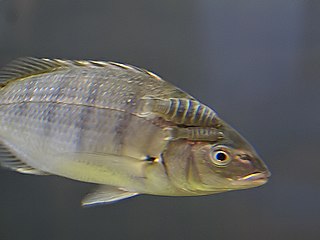
The Cymothoidae are a family of isopods in the suborder Cymothoida and are found in both marine and freshwater environments. Cymoithoids are ectoparasites, usually of fish, and among their number they include the bizarre "tongue-biter" which attaches to a fish's tongue causing it to atrophy, and replaces the tongue with its own body. Ceratothoa oestroides is one of the most devastating ectoparasites in Mediterranean aquaculture. Around 40 genera and more than 380 species of cymothoid are recognised. Species of the Cymothoidae are generally found in warmer waters and rarely in the cool and cold climates.

Pentidotea wonsnesenskii is a marine isopod which lives on seaweed on rocky shores along the British Columbia and Washington coastlines, as far south as San Francisco. It can be as large as 40 millimetres (1.6 in) long, with a concave tail rather than an indented tail as previously shown on this page, is usually green, but its colour is adaptable to its environment. It can often be found hiding under rockweed in the intertidal zone. It is named after the Russian biologist Ilya G. Voznesensky.
Hemioniscus balani, a species of isopod crustacean, is a widespread parasitic castrator of barnacle in the northern Atlantic Ocean. Its range extends from Norway to the Atlantic coast of France, and as far west as Massachusetts. It is also commonly found on the Pacific coast of North America; it is not known if the Pacific and Atlantic populations are the same species, or if the Pacific population exists following human-assisted introduction.

Balanus crenatus is a species of acorn barnacle in the Balanidae family. It is found in the North Pacific and the North Atlantic Ocean.
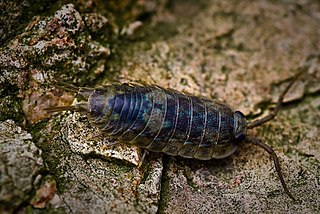
Ligia is a genus of isopods, commonly known as rock lice or sea slaters. Most Ligia species live in tidal zone cliffs and rocky beaches, but there are several fully terrestrial species in high humidity environments.
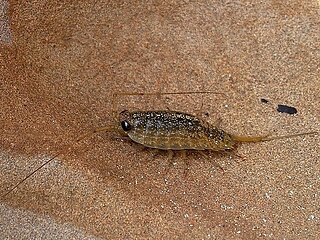
Ligia exotica, also called sea roach or wharf roach, is a woodlouse-like isopod, a sea slater in the family Ligiidae. It is found in various parts of the world living on rocky coasts and harbour walls just above high water mark.

Glyptonotus antarcticus is a benthic marine isopod crustacean in the suborder Valvifera. This relatively large isopod is found in the Southern Ocean around Antarctica. It was first described by James Eights in 1852 and the type locality is the South Shetland Islands.
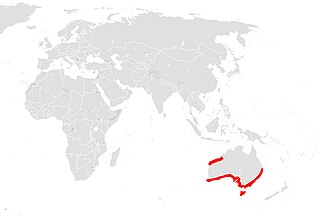
Ligia australiensis, the Australian marine slater, is a woodlouse in the family Ligiidae.
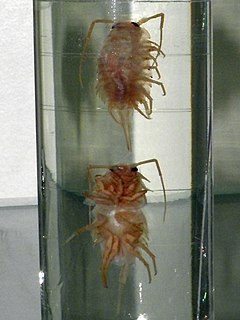
Ligia cinerascens is a woodlouse in the family Ligiidae.

Ligia diletata is a woodlouse in the family Ligiidae.

In biology, semiaquatic can refer to various types of animals that spend part of their time in water, or plants that naturally grow partially submerged in water. Examples are given below.
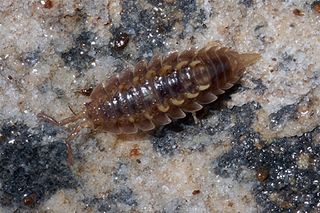
Deto echinata, the horned isopod, is a species of air-breathing isopod, or woodlouse, in the family Detonidae. It inhabits seashores in southern Africa and on some oceanic islands.


















